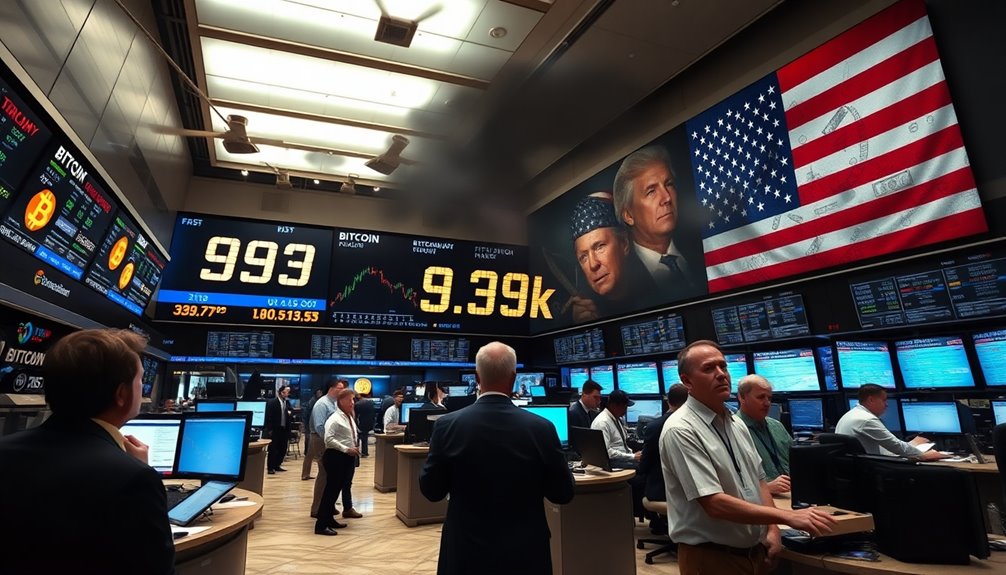Trump's recent tariffs have caused Bitcoin's price to drop to about $93,000, wiping out over $2 billion in the crypto market. This sudden decline has shaken your confidence as investors reconsider riskier assets amid escalating economic uncertainty. With inflation concerns and retaliatory measures from other countries complicating trade relations, the crypto landscape faces significant hurdles. If you want to understand how these developments could affect the market's future, there's more to explore.
Key Takeaways
- Bitcoin's price plummeted to approximately $93,000, resulting in a $2 billion loss in the crypto market within hours.
- Investor confidence has declined due to economic uncertainty, prompting a shift towards safer assets.
- Tariffs have increased costs for mining equipment, squeezing profit margins and threatening smaller operations.
- Retaliatory measures from other countries complicate trade relations, hindering growth in the crypto sector.
- Despite current volatility, long-term prospects for cryptocurrencies remain optimistic, emphasizing the need for market awareness.

As Trump's tariffs on goods from Mexico, Canada, and China hit the market, you might've noticed Bitcoin's price take a significant dive, plummeting to around $93,000. This sudden drop reflects the broader volatility in the crypto market, where over $2.0 billion vanished within hours. With fears of a global trade war escalating, economic uncertainty has gripped investor confidence, leading many to reconsider their positions in riskier assets like Bitcoin.
The impact of these tariffs runs deeper than just a price dip. Concerns about inflation threaten to stymie potential interest rate cuts, which can further deter investment in cryptocurrencies. As you watch the market, you can see how investor sentiment has shifted; many are taking profits and hoarding cash, causing crypto prices to falter. Cryptocurrencies are known for their volatility, making them less appealing during turbulent economic times. Crypto-related stocks have also seen declines of 5% or more in premarket trading, amplifying the overall market concern.
Moreover, the announcement of retaliatory measures from countries like Canada complicates trade relations, further intensifying the market's instability. The crypto industry had been hoping for a more favorable regulatory environment under Trump. Still, the introduction of tariffs presents new hurdles that could stifle growth and innovation.
For those involved in cryptocurrency mining, the tariffs have raised costs for essential equipment, squeezing profitability. Smaller operations, in particular, face significant operational challenges and may even consider relocating to countries with more favorable trade policies. This shift could affect the global hash rate and overall market dynamics.
Despite the current chaos, the crypto market has shown resilience. Although prices have dipped, many investors remain optimistic about the long-term prospects of cryptocurrencies. The potential for recovery is evident, as the market fundamentals still seem strong.
However, ongoing trade tensions and the unpredictable regulatory landscape will undeniably shape the future of crypto. As you navigate these changes, staying informed will be key to understanding this dynamic market.
Conclusion
As the storm clouds of Trump's tariffs gather, the ship of Bitcoin sails through turbulent waters, struggling against the waves. You see, just like a sailor adjusting the sails, crypto enthusiasts must adapt to these market winds. Though Bitcoin's price may dip to $93k, remember that even the mightiest storms eventually pass. Stay the course, for after every tempest, the sun shines brighter, and new horizons await those brave enough to navigate the changing tides.









